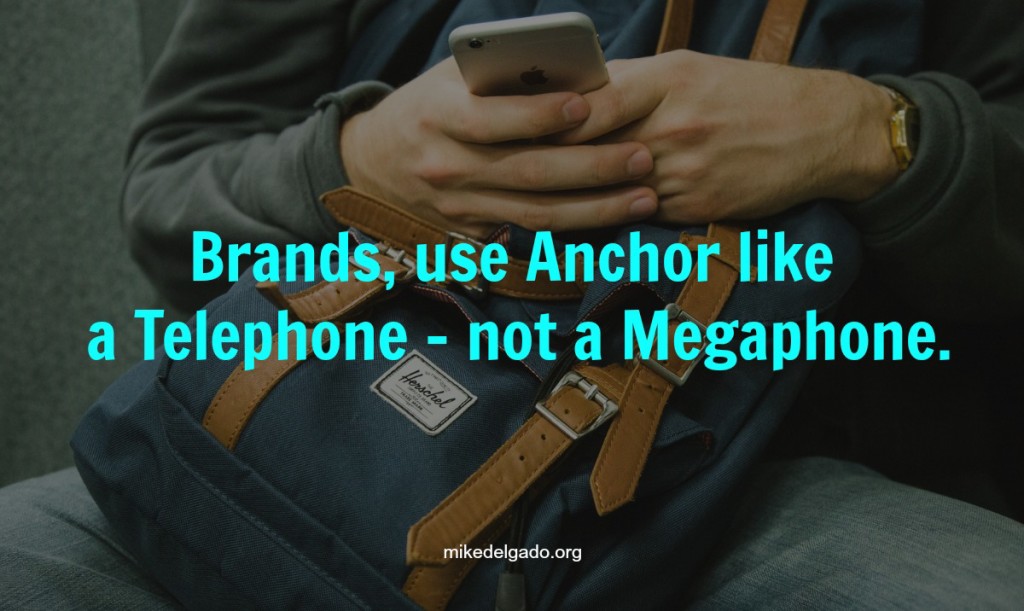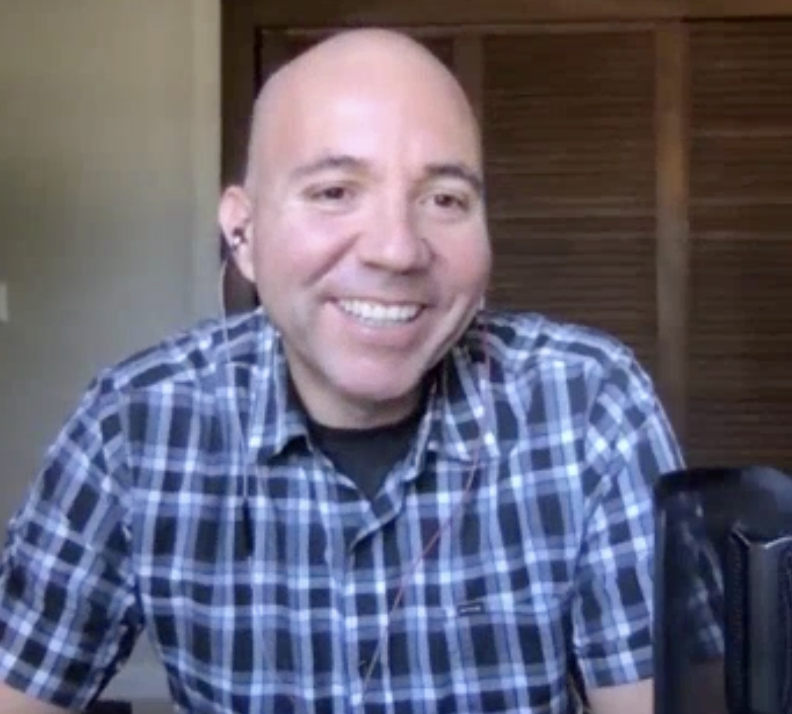
Brands, please use Anchor like a telephone – not a megaphone. This means listening and adding value to Anchor conversations — not using waves as your audio ad channel.
If you’re thinking about using Anchor for business, here are some suggestions before diving in:
1. Spend most of your time listening – not talking.
Don’t start creating audio content without first listening to how others are using it. Spend several hours navigating Anchor to listen to discussions that matter to your community.
Listen to some of the trending conversations going on to get a feel of the Anchor culture. If you don’t enjoy listening to other people’s points of view, this platform is not for you. Most of your time on this platform should be listening, not talking.
One of the biggest benefits to listening is that you’ll discover topics and challenges your target audience has. As you listen to waves based around topics important to your business, have your notepad open so that you can jot down the interesting comments made. These waves can inspire a boatload of content. You just need to listen – and take notes of what is being said (and by who).
2. Replies are more important than posts.
When first starting out, you might not receive a lot of engagement on your waves. It’s similar to joining any new social network. It takes time for others to find you – and it takes time for you to find your target audience. Don’t worry if you’re not receiving a lot of replies on your waves. Instead, participate on other member’s conversations that matter to your target audience.
Reply whenever you can add value to the discussion. Make it a goal to reply to 8 to 10 different people every day. This will help you increase your visibility, gain relevant Anchor followers, and begin to earn some replies back on your posts.
3. Focus on adding value to the Anchor conversations.
Don’t simply reply to a thread because it’s popular or trending. Only join into a conversation if your brand can add value. Spending time on Anchor is like attending a party. There are different conversations happening all over the room. You are welcome to join into any discussion, but make sure you’re there add value (e.g. share your point of view, ask another question that fits into that discussion, reply to someone else who replied).
4. Don’t fight for perfection, focus on being personal.
Don’t try to create perfect waves. Anchor isn’t a podcast… it’s like a phone conversation. The anchor community craves real dialogue — not perfected sound bites. Have fun as you dialog with others and don’t take yourself too seriously. If you make a mistake, just roll with it. Being vulnerable and not worried about revealing your audio mistakes will help your brand become more human. And it will be appreciated.
5. Find the right person to be the voice of your organization.
It’s not about finding someone who has the best voice, it’s about finding the person in your organization who can represent your brand well. The company’s first pick should probably be the community manager who is already doing this. You need to find someone who enjoys conversation and quick to respond while a conversation is happening (or just starting up).
The person handling Anchor should be personable, helpful, and doesn’t take himself/herself too seriously. If your brand has a big team, you could have multiple people replying to different waves depending on their specialty.
6. Use your name when meeting someone for the first time.
When you post a wave, your organization’s name will be the username (similar to other social networks). So it’s important that the person speaking introduces her/himself whenever creating a wave. Remember, this is about creating a conversation. People want to know who they are talking with. Sure, they are talking to your brand.
However, it’s the person behind your brand where the engagement is happening. The Anchor community needs to know who is the voice to help encourage more dialog. This is especially important when replying back to someone (e.g. “John, my name is Mike from Company X, what a great question …”).
7. Don’t drown out background noise, embrace it.
Be creative and record your waves when other sounds are going on around you. You can even have fun by pointing out what the sound is — or make it a game and let people guess. Dogs barking, phones ringing, nose from traffic, rain, wind, are all great background noises.
Background noise brings more life to your waves (and adds a “realness” to your recordings). It’s much more interesting to listen to someone talking outside than a quiet sound booth. Remember, treat anchor like a phone call.
8. Spend time serving your community — not selling.
Most companies know that if they want to do well on social media platforms they need to be helpful. However, there are always some companies that feel a need to pitch in every post. You don’t need to have a call-to-action in every wave. You don’t need to point out your website, email address, or phone number every time you reply.
Focus on delivering value and answering questions. This doesn’t mean you can’t ever promote your products and services. It just means that selling shouldn’t be your ultimate focus on this platform. You’re not on anchor to create radio ads – you’re there to provide value and create a dialog. Strive to help others first … and let the selling happen organically as you point out ways to help further.
How would you like to see brands participate on Anchor? Let me know your thoughts in the comments below (or on this wave).
You might also find these articles helpful:
Anchor Analysis: How to Increase the Visibility of Your Waves
Anchor Analysis: How to Find Waves That Matter to Your Business
Anchor Analysis: How to Repackage Waves for Business
Anchor Analysis: How to Make Waves for Business
Ways Businesses Can Use & Discover Audio Commentary on Anchor

